What happens before what happens, happens...
We are no longer building saddle trees, but we have two videos about how Western saddles fit horses available on our westernsaddlefit.com website.
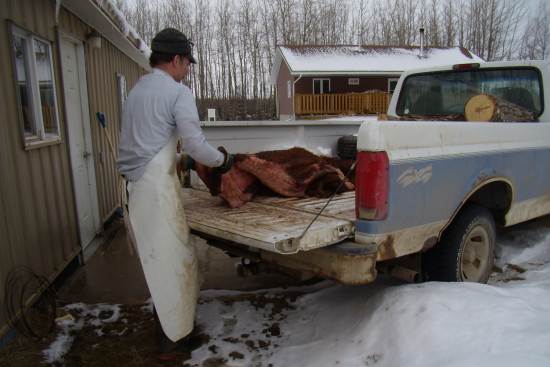
Yesterday I posted even more pictures of rawhiding trees, and previously I have posted about Rod making the rawhide. But before he can make rawhide, we need to get fresh hides (my job) and get them prepped for making rawhide (Rod's job).
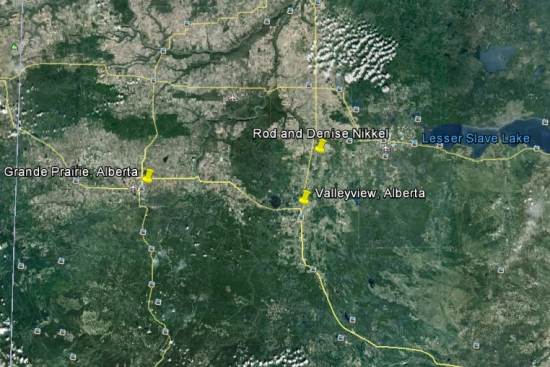
My part of the job starts by calling H and M Meats in Grande Prairie, Alberta sometime during the week to let them know we will be looking for hides that week. They kill on Fridays, so that is the day I have to go get the hides, usually about four per trip. They are pretty good about taking special care skinning when they know we are getting the hides. We can ask for a certain number of bulls or cows and they know the kind of hides we want. We live around 150 kms (about 95 miles) from Grande Prairie which takes about a 3 plus hour round trip on good roads (they're not always good) - plus stops in Valleyview and Grande Prairie for other things when necessary. And it's usually necessary... The workers at H and M load up the hides in the back of the truck for me.
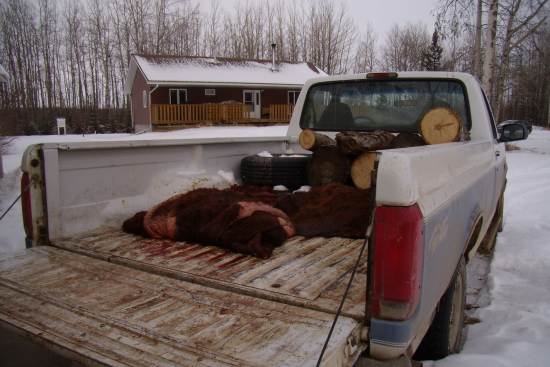
Then I drive home and I back it up to the shop and park it. End of my part of the job! (I love the division of labour around here...)
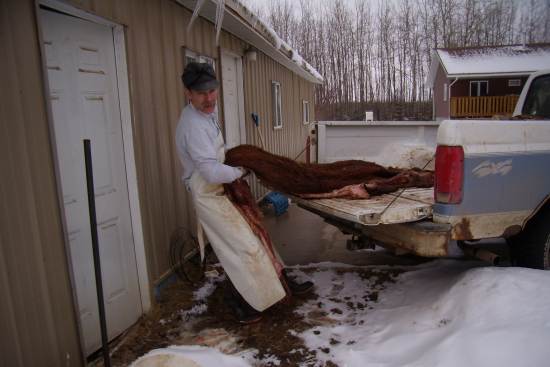
Rod pulls the hide off the truck and into the rawhide room on the end of our shop.
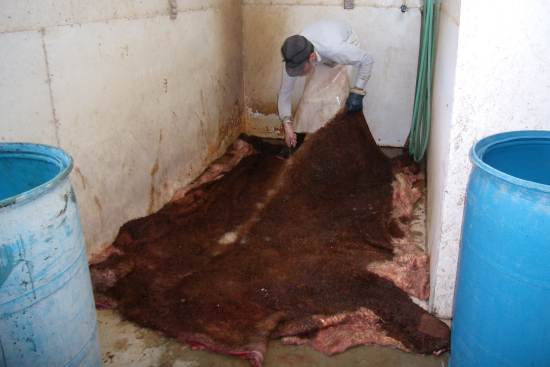
He spreads the hide flesh side down on the floor and splits it down the backbone. By the way, it is tough walking on the hides as they really slip around on the floor under your feet.
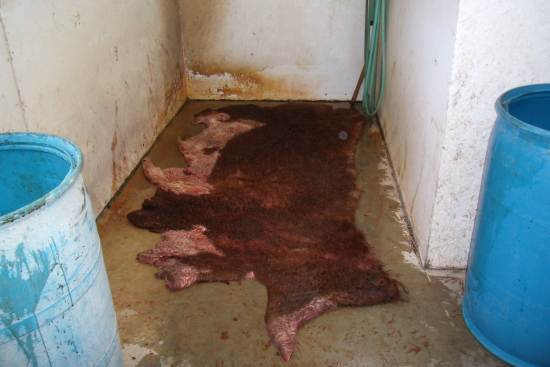
Here's half a bull hide. This is a larger bull for sure but not out of line with what we often get.
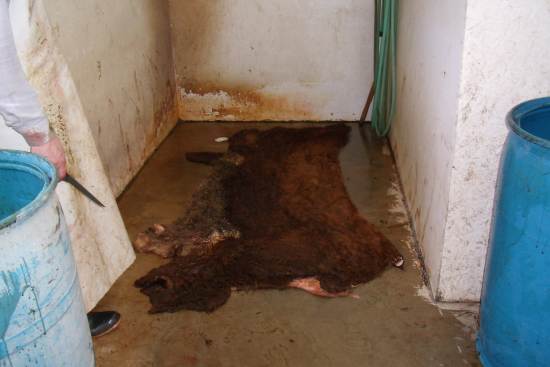
Here's half a cow hide. Some cows are bigger than this, but not all. Besides the size difference, there is a real difference in thickness of the hides between cows and bulls. We use cow hides on special request when the maker wants a "lighter than a full thickness bull hide" on their tree. Since we don't split the hides, our cowhide is usually as thick or even thicker than commercial "bull hide". (Commercial hides are labelled as "bullhide" based on thickness, not necessary which sex of animal the hide came from.)
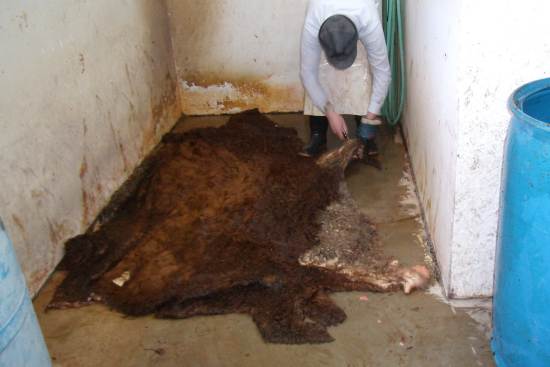
Rod trims off all the pieces he isn't going to want right away. They come with tails, hocks, elbows, briskets and other various bits still attached.
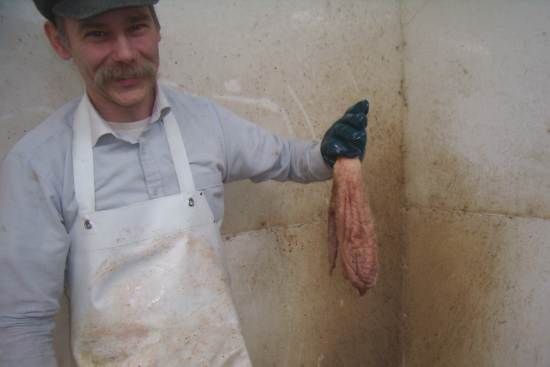
Those bits can vary depending on whether the hide is from a bull
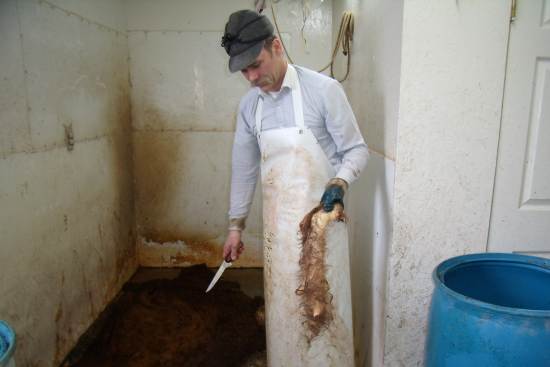
or a cow.
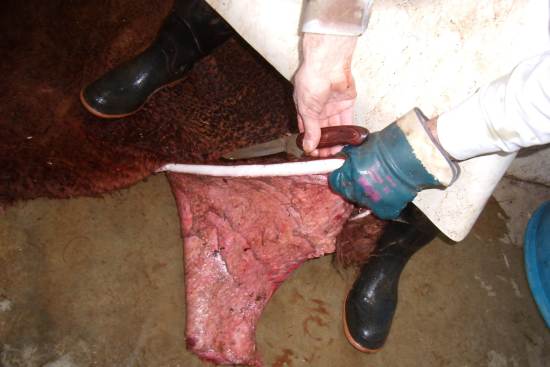
The other piece that he often has to trim from big bulls is the neck. That hide is just way too thick to use.
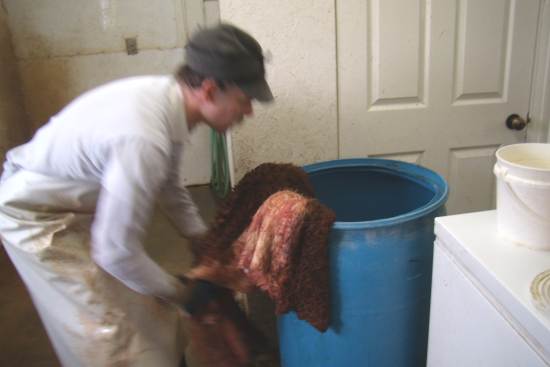
Then the hides go into barrels to soak - two full hides per barrel.
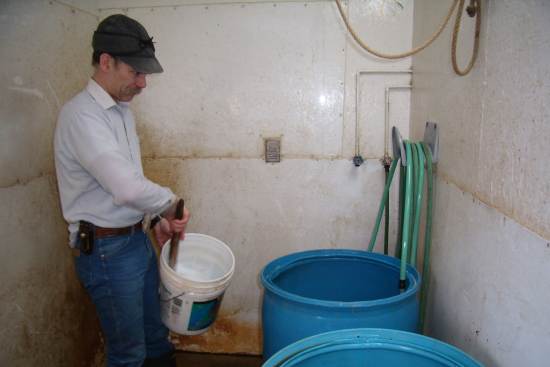
Rod mixes up some soap in the initial rinse to help the water penetrate the hide better. (We had a great discussion about making rawhide with Shep Herman of Herman Oak at the show in Sheridan last spring. We had heard of using the soap before but didn't do it often. Shep explained the benefits and why it is a good idea.)
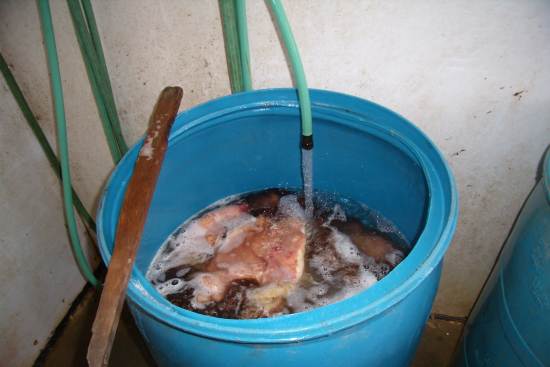
Then the barrels are filled to cover the hides and Rod lets them sit for a few days before making the rawhide as that really helps in fleshing them. If it is warm, as in summer up here, he changes water in the barrels daily or twice a day. If it is cool, as in winter even in the shop, he changes the water less often.
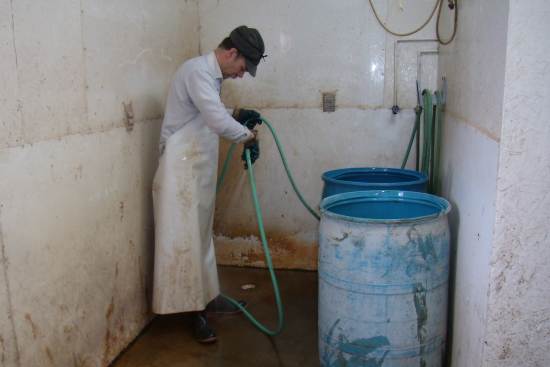
And don't forget the clean up, first of Rod (and he gets upset with me if I flick a little bit of dish water at him!!! Can you believe that?)
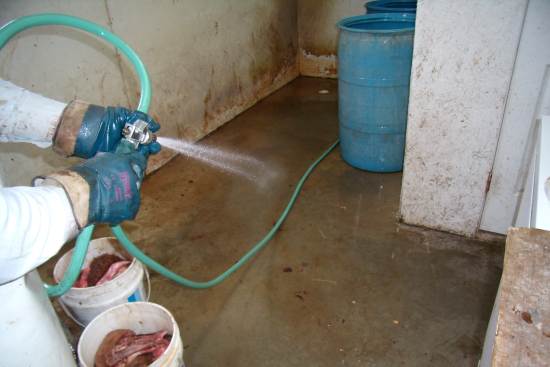
and then the floor. The hole in the floor in the back corner is a drain that really helps make clean up easy in there.
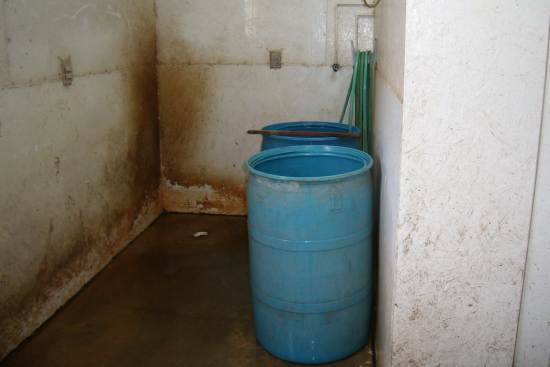
And there they sit till Rod makes rawhide again next week.
Cool. Thanks. I had a guy who taught me about Sheridan Carving, who also makes his own trees and he told me that once a hide dries out, it never is possible to get it back to that stage, no matter how long you soak it, so you should always use it from the original state as it would tighten down more. He got his rawhide vacuum packed and kept it in the freezer if he couldn't use it right away, I believe.
